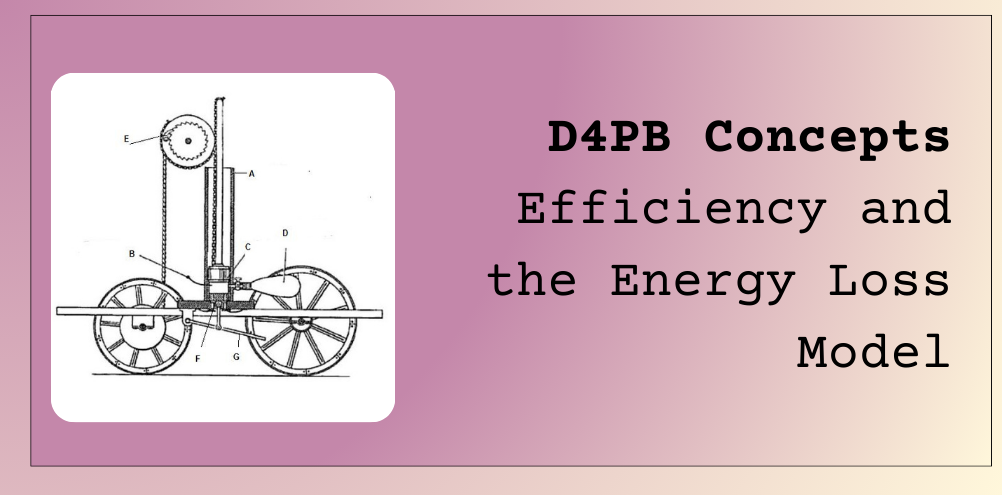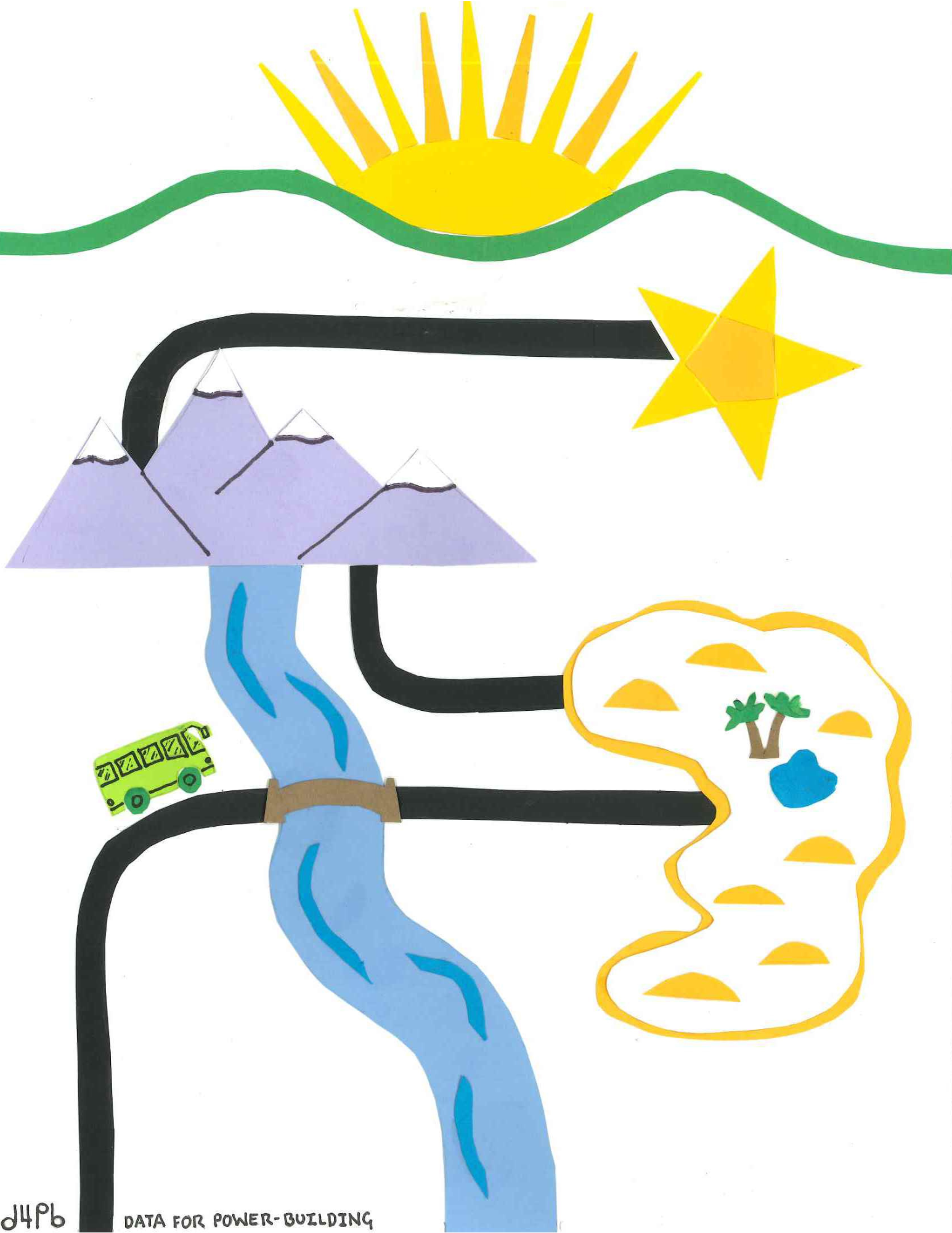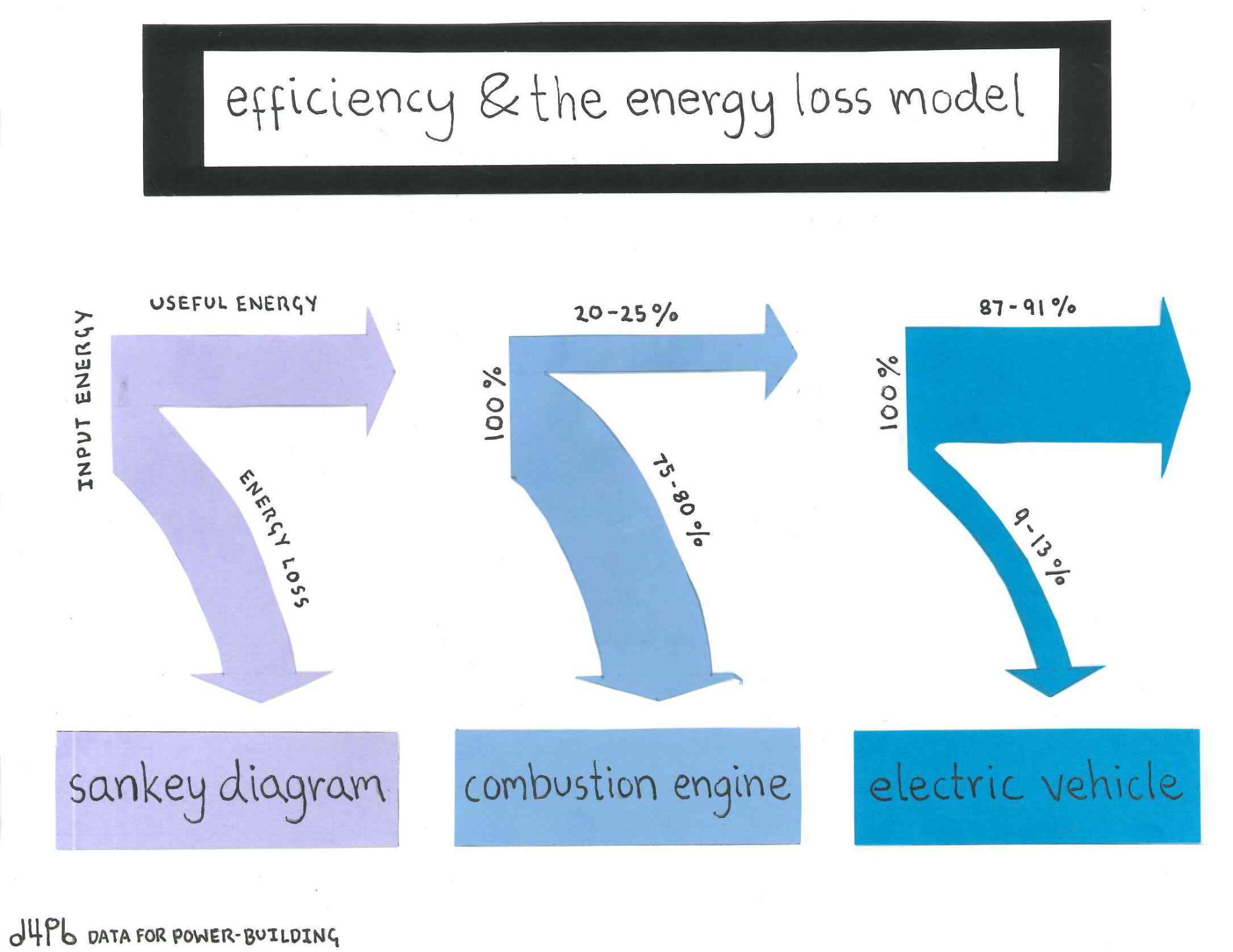D4PB Concepts: Efficiency and the Energy Loss Model

D4PB Concepts is an occasional series where I work out the ideas that bounce around endlessly in my head—at least, the ones related to data and power-building.
I think a lot about my own energy: the energy I'd need for all the things I'm trying to do (a lot!), the energy I have to do them (not enough!), and how to handle that mismatch. Slowly, I've been learning that how I make these choices—what I choose to focus on, whether or not I overextend myself, how I handle the recovery—has an enormous impact on whether or not my life is moving in the direction I am trying to steer it.
As adrienne maree brown says, "what we give our attention to grows."
So maybe it tracks that I'm also a bit obsessed with how organizations are choosing to use their resources. Are those choices are moving them towards their goals? How effectively? How do we know? To what extent can we know?
Here's a visual about campaign strategy that comes from the very earliest era of my organizing training:

In this metaphor, the star is the destination, the goal of the campaign. Beyond it is the horizon, the vision towards which the campaign is one stepping stone. The road is the strategy, the path you expect to take to reach the goal, and you may need many different kinds of vehicles, aka tactics, to successfully navigate the terrain (which can never fully be predicted in advance) and reach your destination.
Theoretically, in an effective campaign or organizing project, people execute tactics according to a strategy that moves them towards the goal. And what fuels the vehicle and moves it forward, whatever tactical form it may take, is energy: the energy of the organization's staff, members, and/or volunteers.
One way to travel further is to increase the energy going in, i.e. to recruit and train more volunteer leaders, hire more staff. That's obviously crucial. But what about process improvements? Can we go further on the same amount of energy?
This question makes me think about automobile engines. We put energy in: electricity in the case of fully electric vehicles (technically "battery electric vehicles" or BEVs, but I'm just going to call them electric vehicles), or for internal combustion engines (ICEs), something with potential energy (gasoline, ethanol) that will be released when the fuel is ignited and combusts. Energy in ICEs is lost in all kinds of ways, or just used for purposes that don't directly contribute to moving the vehicle: converted into light and friction and sound, released as exhaust heat, routed into processes internal to the vehicle itself (for example, running a water pump that circulates coolant). All in all, about 75-80% of the original potential energy is lost; 20-25% is successfully harnessed to move the vehicle forward.
A key element of making an engine more efficient is reducing this energy loss. Electric vehicles are a lot more efficient than ICEs. On average, only about 31-35% of the original input energy is lost, and "regenerative braking" can recapture up to 22% of the original input and route it back to the engine. Regenerative braking muddles the math a bit, but basically, only 9-13% of the original input energy is lost or used for purposes besides moving the vehicle.
The same info, but in a few Sankey diagrams (vehicles are a lot more complicated than this, obviously, but humor my toy models):

I'm deep-diving on this metaphor because we deal with energy loss all the time in power-building work, and while data strategy can't address this by itself, it's a crucial piece of the puzzle. Here are a couple ways I've seen this play out (generalized a bit from the real-life scenarios):
- A staff organizer is hired to organize a geographic area. They start building relationships and developing an understanding of the power map in that area (who makes decisions that affect the lives of the people we're organizing with? who are they influenced by/how could they be moved to do what we want?). At some point, they get a different job, and leave. The person hired to replace them discovers that there is no record of their work (no contact lists, no notes about the stories and motivations of the people they were organizing with, no trace of their power analysis) and has to start from scratch.
- A team spends a lot of time preparing a great program for an organization-wide meeting. The agenda is thoughtful, the people speaking and leading sections of it are prepped and ready, and the call to action ("here's what you can do next and why it matters") is clear and compelling. However, one thing they don't consider is a sign-in process, or a way to capture the commitments people made in the room in response to the call to action. The team does their best to remember who was there and who made commitments in order to follow up with them, but it's clear that without that data, the event wasn't as impactful as it could have been.
One of my initial hypotheses in this project was that data is an organizable resource and therefore a potential source of power. I think it's still helpful to think about data in the mix with organized people, organized money, and other kinds of organized resources that are key to power-building. But these concepts, efficiency and the energy loss model, help me clarify that idea a bit. We could say that organizing methodologies—the day-to-day tasks we choose to do and how we do them, the systems we develop to support them—are the engines of power-building work, and they run on the energy that people pour into them. Data itself is not an energy input to that engine; data and data strategy help us design the engine to operate more efficiently.
I don't use this word lightly. From extractive industries like mining to factory assembly lines to retail, "efficiency" has been used to justify speed-ups and crackdowns that steal workers' health, fingers, limbs, livelihoods, lives. In office jobs it can suck the soul right out of you. As a smokescreen for extracting the most profit possible from workers regardless of the cost, it has an evil history.
But also—people do pour their energy, their time, their life force, into organizing work. How well we are stewarding that energy matters. It matters intrinsically, because each person's life is precious, and it matters instrumentally, because the success or failure of organizing efforts has a real impact on people's lives. That's why we're doing all this in the first place.
Got an idea for a future post, someone I should talk to, or feedback of any kind? Email me at molly@tallgrassco.com—I'd love to hear from you.
If you'd like D4PB posts sent straight to your email, and full access to the archive, you can subscribe by clicking the button below. It's free!